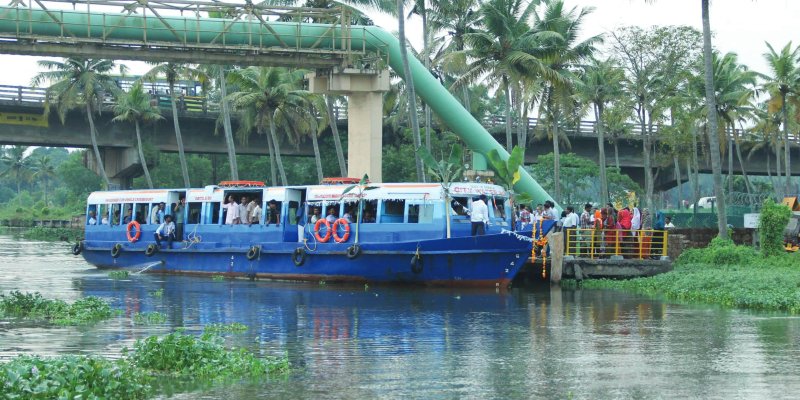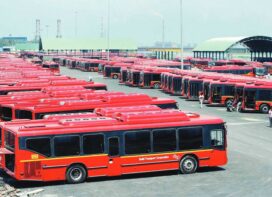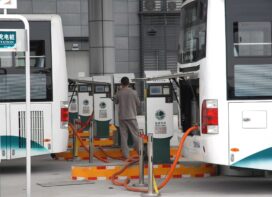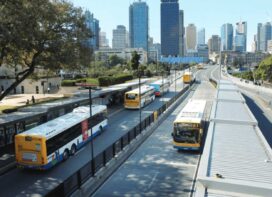In Kochi, inland transport was once the primary means of freight and passenger transport on the Vembanad Lake, and the system has been declining over the last few decades. There has been minimal investment and technology upgrades. With Kochi Water Metro, the scene is changing…

With the Cochin Shipyard delivering two more boats, the Kochi Metro Rail Limited (KMRL) is set to launch India’s first Water Metro services in September 2022. KMRL requires five boats to begin operations. While four electric hybrid boats have been received, a fifth one is likely to be delivered soon. The Cochin Shipyard is building 23 electrically propelled hybrid boats for Phase I.
The construction of 14 terminals is expected to be completed by December.
 While work on terminals at Kakkanad, Vyttila and Eloor has been completed, the construction of the terminals at Vypeen, Bolgatty, High Court, South Chittor and Cheranalloor is almost complete. “If all goes well, we will be starting operations on the High Court-Bolgatty-Vypeen stretch as planned,” Loknath Behera, MD of KMRL said. It is for the islanders.
While work on terminals at Kakkanad, Vyttila and Eloor has been completed, the construction of the terminals at Vypeen, Bolgatty, High Court, South Chittor and Cheranalloor is almost complete. “If all goes well, we will be starting operations on the High Court-Bolgatty-Vypeen stretch as planned,” Loknath Behera, MD of KMRL said. It is for the islanders.
The `821 crore integrated ferry transport project in the Greater Kochi region is a socially inclusive transport system with an affordable tag. Kochi Water Metro, a subsidiary of KMRL has streamlined 15 routes that cover 76.2km, connecting 10 islands. It will connect six panchayats and three municipalities.
It serves as a feeder service to suburbs along with rivers where transport accessibility is limited, and its first route between Vytilla and InfoPark at Kakkanad was constructed in 2021 under Phase I.
German assistance
The State contributes `100 crore while the rest is given by the German development bank, Kreditanstalt Fuer Wiederaufbau (KFW). Its functions are those of a promotional bank for the domestic economy and a development bank for the developing countries. The long-term loan agreement for Kochi Water Metro is for 85 million Euros (`692 crore).
The Kerala backwaters are a network of brackish lagoons and lakes lying parallel to the Arabian Sea coast, the Malabar Coast in South India, as well as interconnected canals, rivers and inlets, a labyrinthine system formed by more than 900 kilometres of waterways.
Thanks to its location on the lower west coast of the Indian peninsula, Kochi is less vulnerable to storm surges or cyclones, compared to cities on the eastern coast of India. Kochi sits within a complex estuarine system comprising Lake Vembanad and many rivers flowing into it, including Periyar and Muvattupuzha. Out of the 1100 kilometres of waterways available, only 40 kilometres are navigable for motor boats since, according to the Inland Waterways Authority of India regulations, a minimum depth of 2m is mandatory for their operations.
78 boats, 38 terminals
When completed, the project will have 78 boats and 38 jetties/terminals and two boatyards. It will have modern, energy efficient, eco-friendly and safe boats with low wake and draft characteristics at a high frequency to increase ridership.
The distance between each headway across various routes is estimated to vary between 10 to 20 minutes at peak hours. The water depth required is -2 to -2.5m CD in channels and -1.50m in approach and jetty pockets. Since major parts of the channels are already in use, dredging is not significant whereas the approaches from the navigational channels to the terminal area constitute the main part of the dredging. The total dredging is estimated to be 0.65 million cubic metres. There will be navigational buoys and night navigational assistance throughout the routes. Water weed and floating waste management will be taken care of.
Thus the various technical components involved in the Kochi Water Metro are boat terminals and access infrastructure, boats, boat yards, dredging along the routes and terminals and the systems like navigation, AFC, PIS, VCS, CCTV and operational and control centre.
Three types of terminals, floating pontoons
In the order of size and capacity, there are three types of boat terminals here: major, intermediate and minor. These terminals are designed as a space for passenger gatherings. Terminals having 1000 PHT (Peak Hour Traffic) falls under the major category, less than 300 PHT is minor and terminals with 300-1000 PHT are intermediate. All are divided into paid and non-paid areas. The ticketing facility, ticket vending machine, and station control, among other facilities, are in the unpaid area. Waiting areas and toilets are provided in the paid area.
All have automated fare collection and turnstile systems for passenger counting.
Kochi Water Metro has adopted floating jetties to facilitate embarkation and disembarkation of physically challenged and elderly passengers. Concrete pontoons are installed on the terminal waterfront where the water depths would be about -1.5m CD to -2.5m CD. They are connected to the terminals by an aluminium gangway. The pontoons are provided to cater for the tidal variation. Since the pontoons are designed with a freeboard of 0.8m in line with the freeboard of the boats, the same level will be maintained in case of tidal variations which in turn will facilitate wheelchair movement.
Eco-friendly boats with a catamaran hull
The boats will run at an average speed of eight knots, with the top estimated to be 12 knots.
Of the 78 boats, 23 are meant for 100 passengers and 55 are for 50. There are four rescue cum workshop vessels to support the main fleet, in case of emergency and repair. The boats are designed to meet the following requirements:
Low Draft: The estuarine condition creates a challenge for a restricted depth which decreases to less than one metre in certain stretches. The silty mud which exists in the channels poses a challenge for dredging. Hence it was decided to have a draft of 0.9 metres.
Low Wake: The waterways are used for fishing and fish farming by fishermen and traders. Hence it was necessary that the boats have low wake characteristics to subdue the wake and wash effects.
Eco-friendly: The boats would be electrically propelled and there will be no outward discharge. Electrical propulsion or the use of electric engines to drive the screws of a boat eliminates normal vessel requirements like the connection of the engine to the propeller and the alignment of the engine and the propeller.
It also provides the builder with added features like the incorporation of a battery to store power and acoustic decoupling of hull and engine to reduce noise pollution. The diesel-driven internal combustion engine as the prime mover has been completely avoided.
Lithium power technology
With this power, the Kochi Water Metro used batteries to store energy and drive the vessel up to eight knots The lithium titanate oxide (LTO) technology was identified as the charging regime for the batteries. The selection was made to yield a better life with a maximum number of cycles and fast charging. Kochi Water Metro has multiple charging stations capable of charging the batteries in less than 15 minutes.
A twin screw catamaran hull is chosen for better stability, and safety and to cater to the draft restrictions and low wake properties. It will operate at a draft of 0.9 metres. It can achieve a speed of 8-11 knots in different speed regimes.
Though shipbuilding aluminium alloy plates and extrusions are costlier, they can reduce the overall weight of the hull compared to carbon steel alloys. Aluminium alloys have excellent corrosion resistance. The improvement in aluminium fabrication technology has enabled shipyards to effectively produce aluminium hulls. Though it is costlier, the maintenance cost would be less. The less weight of the boat will give less resistance and hence less power requirement.
Catamaran hull designs are more stable compared to mono hulls of the same capacity. The demi-hulls will be designed with better flow traits. The distance between the demi-hulls will be adjusted in such a way that these will generate maximum waves and the effective wave height will be less. Thus the wave-making resistance is kept at a minimum to take advantage of the power requirement.
 TrafficInfraTech Magazine Linking People Places & Progress
TrafficInfraTech Magazine Linking People Places & Progress


